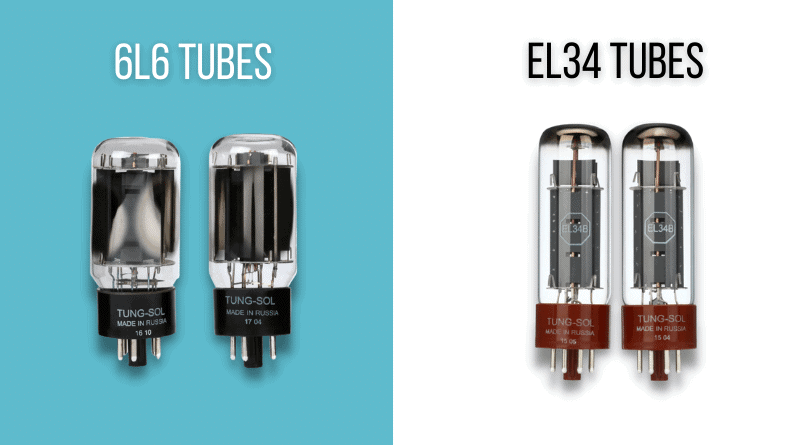Have you ever wondered what it is about different amps that gives them unique tonal characteristics? Of course, the circuitry and the speakers play a huge role, but the actual choice of the vacuum tubes also has a massive impact. For example, the tonal difference between 6L6 and EL34 tubes is night and day.
Certain brands have become well known for their specific sounds. Fender are famed for their cleans and Marshall for their gritty overdriven tones. As you might now be able to guess, much of this is due to the tubes they typically use during construction.
In this KillerGuitarRigs Guide, we take a look at two of the most commonly found power tubes, the 6L6 and the EL34. We explore the differences between the two with regard to tone and construction, and we’ll highlight some of the most famous amps that use these valves.
If you’ve been curious to learn more about these power tubes, you’ll definitely want to keep on reading.
Contents
What is a Power Tube?
In a nutshell, power tubes are control valves that are installed in tube amps. In the UK, you’ll typically hear tube amps being referred to as valve amps for this reason. No matter which type of power tube is in your amp, the fundamental construction is the same, with a cathode and a plate. When energized, electrons flow from the cathode to the plate. While all have the same basic construction method, it’s the precise layout and configuration of these components that gives a valve its sonic uniqueness.
What’s the Difference Between 6L6 and EL34 Tubes?
Tonally speaking, the primary difference between 6L6 and EL34 tubes comes from their construction, which does of course lead to big differences in their output. 6L6 tubes are beam-power tetrodes, while EL34 tubes are pentodes.
Physically, the two are quite different to look at. The 6L6 is a short, fat tube, which is largely due to its wide glass envelope. From this, you can probably deduce that the EL34 is slimmer and taller, although not by much, with perhaps just around 1/8” difference in height.
6L6 and EL34 tubes produce radically different sounds. The 6L6 has a warm, full-bodied tone that’s well-suited for blues, country, and soft rock. Amps with 6L6 tubes are generally referred to as having an American tone. The EL34 has a more scooped sound often described as bass-heavy and is referred to as the British sound. The 6L6 has higher headroom and more present midrange that offers a versatile, yet full sound. The EL34 doesn’t have quite as much headroom, but this makes it much easier to get crunch or overdriven tones.
The 6L6 Power Tube
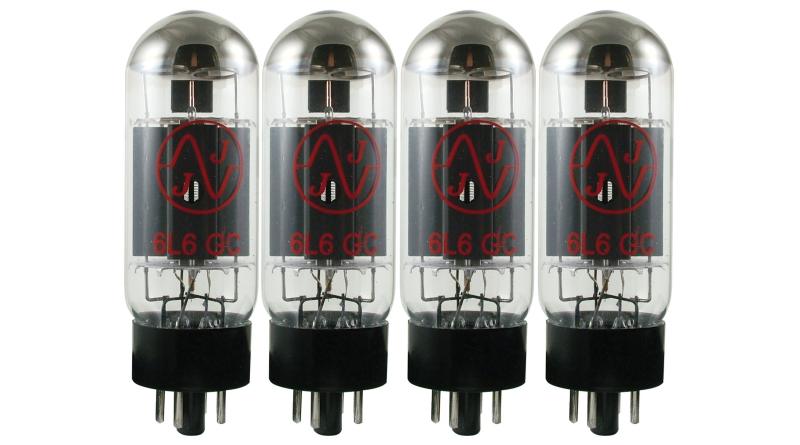
6L6 tubes have a long history, going back all the way to the 1930s. They were originally designed and built in the USA for use in household radios. Over the years, they’ve spawned a huge number of variants, each with a slightly different element. It’s widely acknowledged that the 6L6GC, a model developed in the 1950s, is the best design that was ever produced. As such, it’s the only type still mass produced today.
The 6L6GC handled high wattage far better than previous iterations, and this aligned perfectly with the emerging rock-and-roll trends of the late ’50s. Being an American design, it was only fitting that it became the go-to tube for Fender and their legendary amps of the ’50s and ’60s.
It is the 6L6, specifically the 6L6GC that gives Fender amps their classic tone. These tubes deliver thick and punchy lows, with an extremely tight midrange. At the top end, 6L6 tubes serve up tons of chime and sparkle. And because they handle high wattage so well, it takes a lot to cause breakup. When breakup does occur, the resulting overdrive is chunky, but extremely tight and well-composed.
The EL34 Power Tube
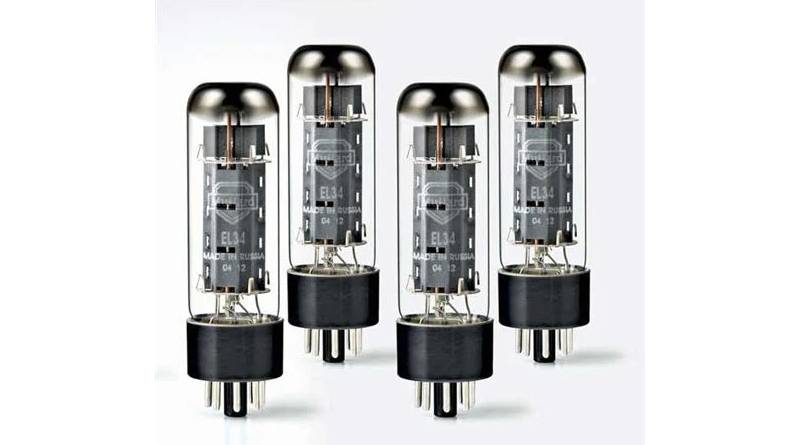
The EL34 is a much more modern tube than the 6L6, having first been introduced in 1955 by Mullard, owned at the time by Dutch electronics giant Philips. Being manufactured in Europe, they were much more easily available for makers like Marshall, who in 1966 switched over from KT66 tubes (which were effectively a 6L6 clone) to the EL34.
At the back end of ’66, Jimi Hendrix had moved to England and was turned on to Marshall by The Who. It was an almost perfect storm of circumstance, but thanks to the huge exposure given by such big names, the EL34-powered Marshalls took off in a stratospheric way.
The tones from the EL34 really defined the British sound. They have an angry-sounding bottom end, which is much looser than that of the 6L6. They have tons of composure in the midrange and a sharp, well-defined top end. The biggest selling point of the EL34 for the newly emerging hard rock and early metal scene was just how easily they could be overdriven. This allowed for a nice crunchy driven tone at lower volumes, but earth shattering distortion when cranked.
Are 6L6 tubes and EL34 Tubes Interchangeable?
In all but a few cases, 6L6 and EL34 tubes are not interchangeable without modification. Those rare amps simply require a bias adjustment, however the majority will likely require some physical modifications.
The primary modification necessary is to properly bias the amp. EL34 tubes don’t draw quite as much power as 6L6 tubes. This means that if you were to install 6L6 tubes into an amp designed for EL34s, the cathode current would be far too high. On the contrary, if you install EL34s into a 6L6 amp, the cathode current readings would be very low. Correcting this would require a resistor change.
The next challenge would be the power transformer. 6L6 tubes draw far less heater current, about 900mA vs 1500mA in an EL34. This discrepancy could damage your amp’s power transformer.
Physically speaking, an amp designed for EL34s will generally accommodate 6L6 tubes, but amps that are set up for 6L6s likely won’t fit EL34s. In this case, the tube sockets would have to be replaced if you were looking to change your tube type.
Before even thinking about swapping tube types, consult your amp’s manual. It needs to be considered that tube amps utilize lethal levels of voltage. Not only that, even after they’ve been unplugged from the wall, they can still retain enough energy to kill or cause serious injury. If you’re not qualified, or at least experienced in dealing with high voltage appliances, this type of modification is best left to a professional.
The Best 6L6 and EL34 Amps
We’ve rounded up some of our favorite amps that make use of each of these power tubes to give you a sense what to look for when shopping for your next tube amp.
Best 6L6 Amps
Fender ’65 Twin Reverb
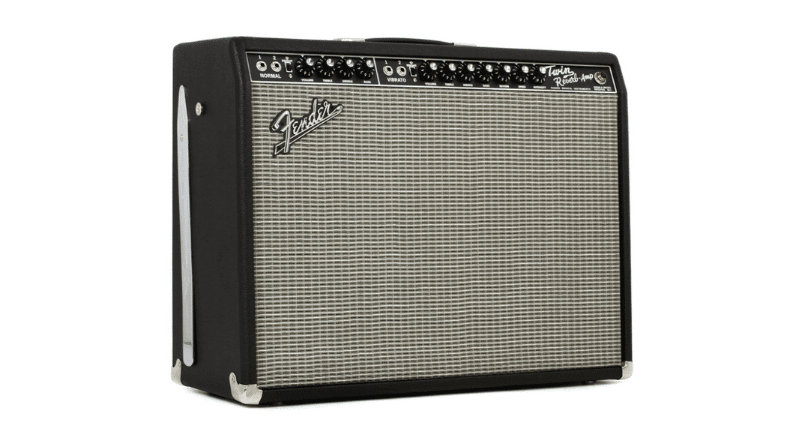
The Fender ’65 Twin Reverb truly captures the feel and tones of the original on which it’s based. It’s an 85-watt powerhouse, built with 4 Groove Tube 6L6 power tubes, delivering effortless clean headroom at insane volumes. The headroom, combined with the relatively flat frequency response will keep pedal users more than happy.
It’s loaded with a pair of 12” Jensen speakers to push air around even the biggest venues, while still remaining composed. It serves up gorgeous glassy cleans, just like the original blackface models, but push it past the breakup point and it provides some surprisingly crunchy overdrive, too.
Egnater Tweaker 40
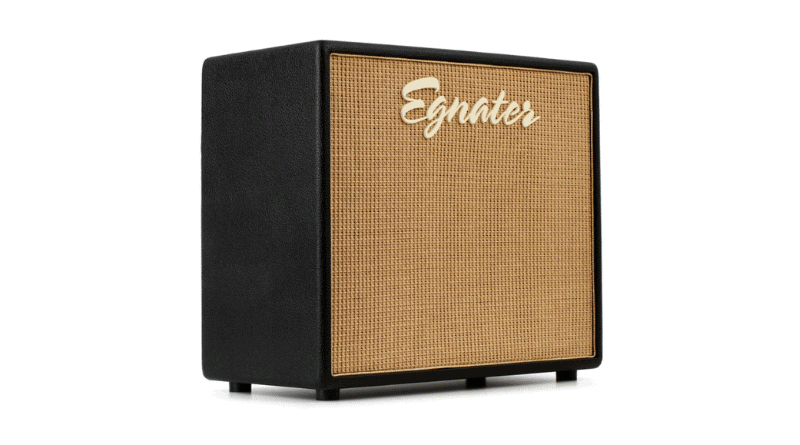
The Egnater Tweaker 40 is a unique 6L6 amp insomuch as it has the ability to sound like an EL34, too. This version is a 40-watt combo with a 1×12” Celestion GH50. True to its name, it’s packed with 11 different switches that allow the user to “tweak” their sound in a number of different ways.
One of the most interesting functions is the Brit – AC – USA switch. As you can probably guess, this takes the amp from a highly-driven Marshall-type tone through to a squeaky clean Fender sound. The AC in the middle is a Vox-type tone, which we’ll call the mid-Atlantic sound, as it sits between British and American.
Bugera V55 Infinium
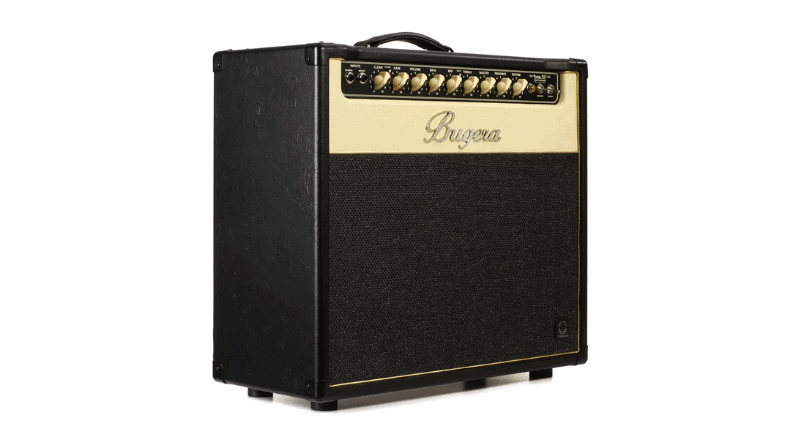
The Bugera V55 Infinium (full review here) is a bargain tube amp from music giants, Behringer. It boasts a plentiful 55 watts of power generated with its twin 6L6 power tubes. This model features tube multiplier technology that actively monitors the condition of each tube in order to keep them at their most efficient operating condition, and subsequently provide a longer lifespan.
It’s a very Fender-esque sounding amp with a classic look and huge clean tones delivered through its British Engineered Turbosound speaker. While it does some great clean tones, it also does well with gritty crunch if the overdrive channel is selected.
Best EL34 Amps
EVH 5150 III
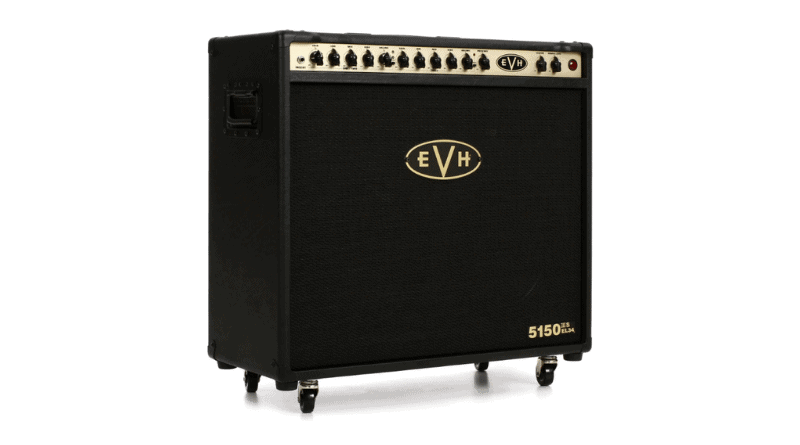
Despite the fact that EVH is a distinctly American brand, the EVH 5150 III is a powerful 50-watt combo that delivers huge British-style tones all around. It does it all, from high-gain metal chug through to Van Halen “Brown Sound” and everything in between.
Even though it’s squashed into a relatively compact package, the twin 12” speakers should have absolutely no problem handling even large gigs. From the factory, it’s fitted with EVH exclusive G12H speakers that remain tight even when the tubes are breaking loose. It looks amazing and the tones are just plain mean.
Blackstar HT Club 40 MKII
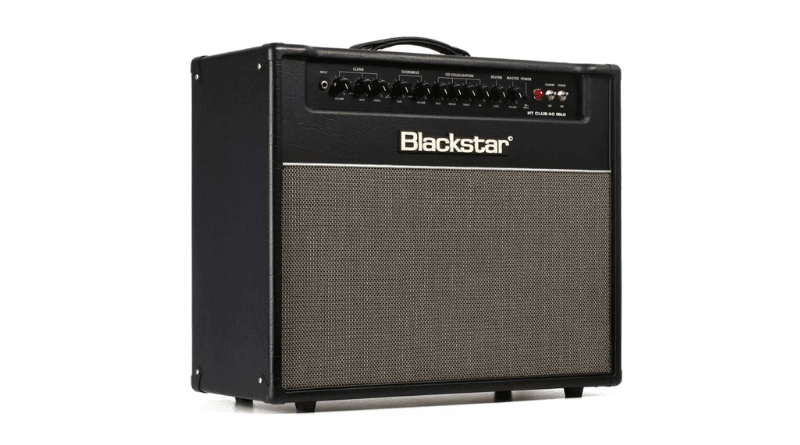
Blackstar is a British brand founded by former Marshall engineers, so it should be fairly obvious which side of the Atlantic their amps skew. It has 40 watts of power and is driven by 2 EL34 tubes. Even though this is an EL34 amp, it does offer quite some versatility thanks to the ISF (Infinite Shape Feature) function, which allows users to switch the tone from a dark British sound, to a chimey American tone with the twist of a dial.
It makes use of a single 12” Celestion 70 Eighty, which performs fantastically well across the tonal range, especially when the amp is set up for an aggressive overdriven tone. In addition, it boasts a vintage/modern switch for even more variety in the sound.
Marshall Origin 20 Head
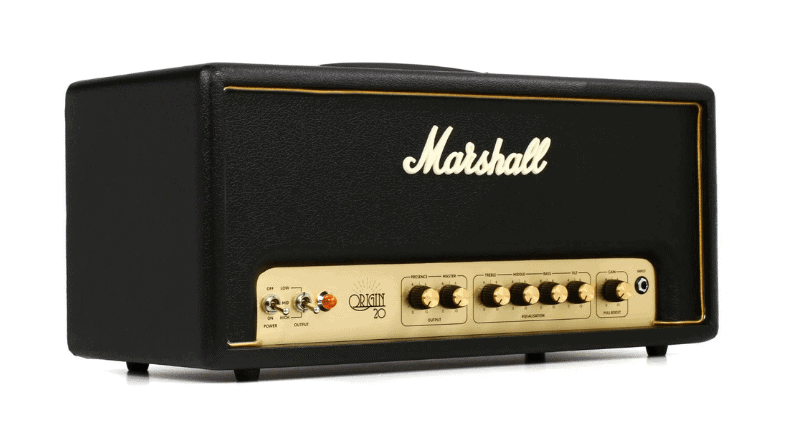
Of course, we couldn’t have a list of EL34 amps without a Marshall! The Marshall Origin 20 Head is one of our absolute favorite Marshall amps (full review here). Sitting somewhere between a Plexi and a Master Volume sound, the Origin is packed with textbook Marshall tone. It uses 2 EL34 tubes in its power section and 3 ECC83a in the preamp stage.
Considering what you’re getting for the price, this really might be one of the Best Value tube heads on the market. Of course it does crunch well and when you need to kick things up a gear, it features a footswitchable gain boost.
6L6 vs EL34 – Which is Best?
As discussed above, due to the vast differences in tone and performance, there’s no good way to specifically state which of the two is better. It’s all going to come down to what your flavor preference is. Do you like the big, brash British tone? Or are you more of a fan of the sparkly, clean American sound?
If you’re a hard rock or metal player, an amp with EL34s definitely makes the most sense for you. These amps break up easily and provide incredible distortion without the need for pedals. This is the most organic way to get that ear-pleasing overdrive that so many of us love.
If on the other hand, you want your preamp section or your pedals to do the hard work when it comes to tonal texture, 6L6-equipped amps are a great way to go. Not only can you still get the textured tones you’re looking for, but this is also the best way to get sparkling clean tones at high volume.
Final Thoughts on 6L6 and EL34 Tubes
We know how frustrating it can be to try and translate guitar jargon. Nowhere in the entire universe of guitars is the naming convention more confusing than it is with tubes! Fortunately in the case of the 6L6 vs the EL34, the two are polar opposites in terms of tone and sound, which does make it quite easy to decide between them.
The 6L6 is mostly used in high-powered American-style amps. It delivers fantastic cleans and a nice, flat frequency response. EL34s are mostly used in dark, crunchy British-style amps, and provide early break up for great texture and incredible distortion with the gain cranked.

